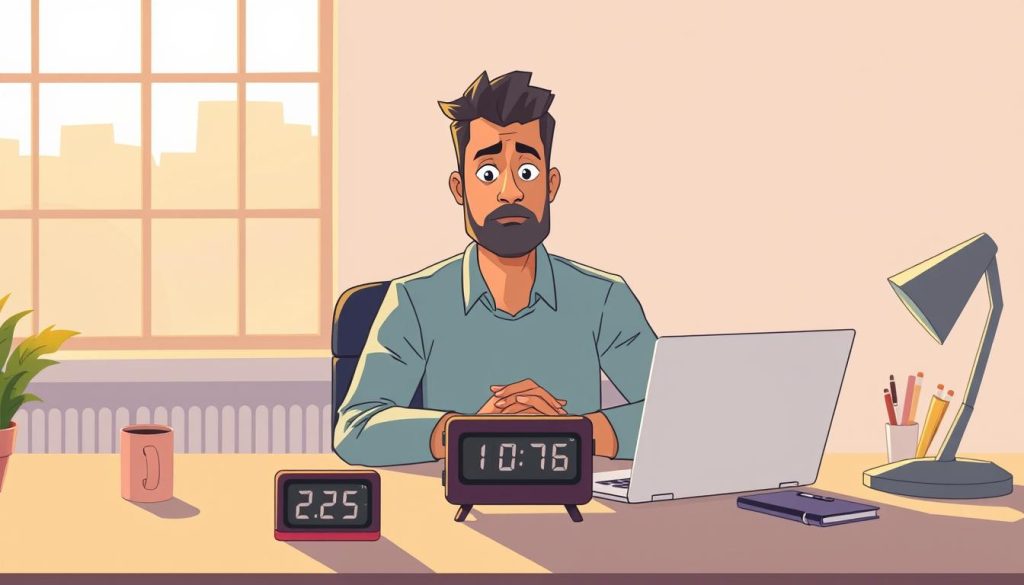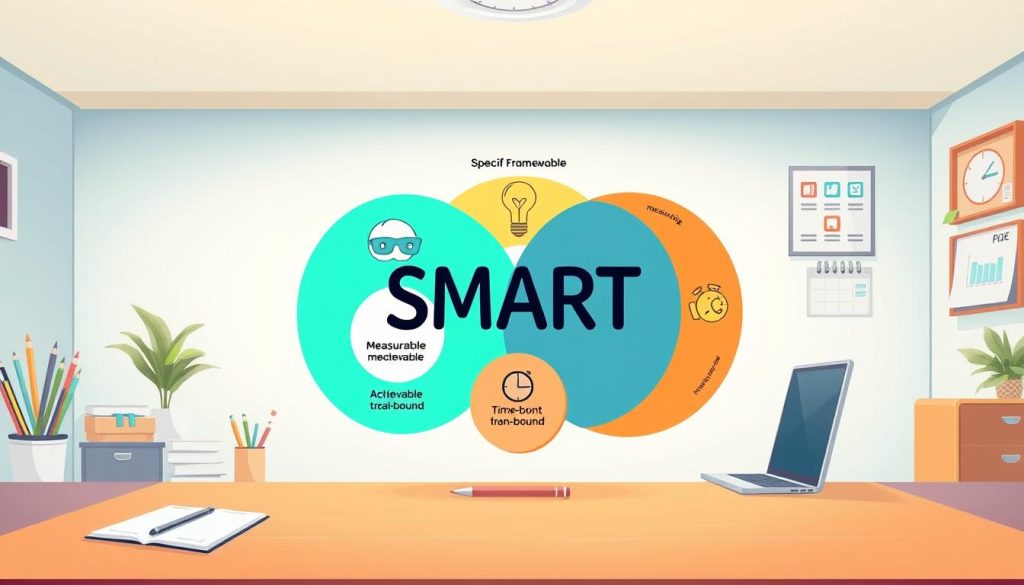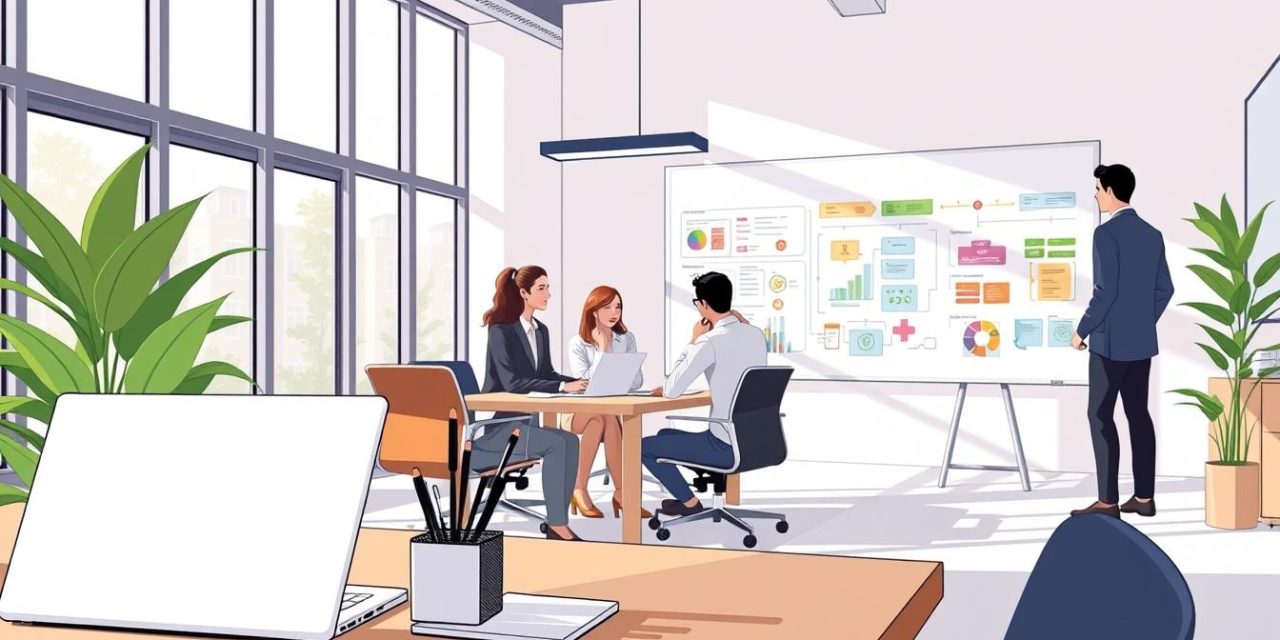What if the secret to thriving in today’s fast-paced workplace isn’t about working harder—but smarter? Many professionals struggle to maintain momentum while juggling deadlines, personal commitments, and the pressure to deliver exceptional results. Yet, the answer lies not in endless hustle, but in strategies designed to harmonize ambition with sustainability.
Modern careers demand more than raw effort. They require methods that elevate performance while protecting your mental and emotional reserves. Our approach goes beyond basic time management, focusing on systems that adapt to your unique role and goals. Whether you’re leading teams or navigating freelance projects, these principles remain universally effective.
You’ll learn how to identify energy-draining habits, prioritize tasks that drive real impact, and create boundaries that safeguard your work-life balance. These aren’t theoretical concepts—they’re battle-tested techniques refined across industries, from tech startups to healthcare organizations.
Table of Contents
Key Takeaways
- Productivity thrives when paired with intentional rest and boundary-setting
- Adaptable strategies outperform rigid routines in dynamic workplaces
- Holistic methods prevent burnout while boosting output quality
- Short-term fixes often undermine long-term professional growth
- Personalized systems yield better results than generic advice
Understanding Professional Efficiency in the Modern Workplace
Modern professionals face a paradox: how to deliver exceptional outcomes without sacrificing personal well-being. True mastery lies not in racing against the clock, but in cultivating strategic precision that transforms how you approach daily tasks. This shift requires redefining success beyond mere output volume.
The Science of Strategic Execution
Professional excellence emerges when skill meets intentional design. It’s about aligning resources—time, energy, and tools—to achieve quality-driven outcomes. As noted in a 2023 workplace study, « Top performers don’t work faster; they work smarter by eliminating energy leaks in their processes. »
Consider these pillars of effective execution:
- Resource optimization: Matching task complexity with appropriate tools
- Decision velocity: Reducing hesitation through clear priorities
- Boundary architecture: Protecting focus time while maintaining flexible work arrangements
Cultivating Results-Oriented Environments
Your physical and digital workspace acts as a silent productivity partner. Professionals using ergonomic setups complete tasks 18% faster while making 23% fewer errors, according to recent ergonomics research. This demonstrates how environmental design directly fuels consistent outcomes.
« The spaces we work in should amplify our capabilities, not drain them. Smart design turns ordinary offices into launchpads for innovation. »
By blending systematic organization with personalized rhythms, you create sustainable pathways to career advancement. The result? Enhanced professional standing without compromising the personal fulfillment that fuels long-term success.
Strategies to Improve Efficiency in Work
Professionals often find themselves overwhelmed by competing demands, yet the solution lies in intentional action rather than increased effort. By combining time optimization with collaborative approaches, you can transform how you approach daily responsibilities while maintaining sustainable momentum.
Mastering Priority Alignment
The Pareto Principle proves crucial: 20% of actions typically drive 80% of outcomes. This table demonstrates how to categorize activities effectively:
| Task Type | Impact Level | Recommended Strategy |
|---|---|---|
| Client Acquisition | High | Daily Focus Blocks |
| Administrative Work | Medium | Batch Processing |
| Email Triage | Low | Automated Filters |
A recent productivity study revealed: « Teams applying strategic prioritization reduce time waste by 34% while increasing goal achievement rates. » This approach helps redirect energy from non-essential tasks toward career-advancing objectives.
Building Synergy Through Shared Responsibilities
Effective delegation starts by matching tasks with team members’ core strengths. Consider these benefits:
- 45% faster project completion rates
- 27% improvement in output quality
- Enhanced skill development across departments
As leadership expert Marie Dubois notes:
« True collaboration multiplies individual capabilities while fostering collective accountability. »
This method creates resilient workflows that adapt to changing priorities without compromising personal bandwidth.
Harnessing the Pomodoro Technique for Better Focus

Imagine completing critical tasks with laser-like focus while maintaining mental clarity throughout your day. The Pomodoro Technique, developed by Francesco Cirillo, offers precisely this through structured intervals of concentrated effort and recovery. This method transforms how professionals approach demanding schedules without compromising well-being.
Implementing the Pomodoro Method Step-by-Step
Begin by listing tasks requiring deep focus. Set a timer for 25 minutes—known as one « pomodoro »—and work exclusively on your priority item. When the alert sounds, step away for a 5-minute pause. Repeat this cycle four times before taking a 15-30 minute restorative break.
Cirillo’s research reveals: « These timed sessions create urgency while preventing cognitive overload. » Professionals using this approach report 40% fewer distractions during core working hours compared to traditional methods.
Optimizing Work-Break Cycles to Prevent Burnout
Adjust session lengths based on task complexity and personal rhythms. Creative roles might extend pomodori to 50 minutes, while data-heavy roles benefit from shorter 20-minute bursts. Track energy patterns using apps like Focus Keeper to identify your peak performance windows.
Key benefits include:
- Reduced mental fatigue through regular recovery intervals
- Enhanced task completion rates via timeboxed objectives
- Natural prevention of prolonged sedentary periods
As Cirillo advises:
« Respect the break as much as the work period—it’s where insights crystallize. »
This rhythm sustains quality output while protecting against burnout, particularly crucial in France’s dynamic freelance market.
Setting SMART Goals for Targeted Success

Vague aspirations rarely translate into career advancement. The SMART framework transforms wishful thinking into actionable roadmaps. This method turns abstract ideas into stepping stones for measurable professional growth.
Defining Specific and Measurable Objectives
Clear targets eliminate confusion. Instead of « improve client relations, » try « increase repeat business by 15% within Q3. » This table shows how to upgrade common goals:
| Vague Goal | SMART Version | Success Metric |
|---|---|---|
| Grow team skills | Complete 3 certified training modules by June | Certificates issued |
| Boost sales | Acquire 20 new clients via LinkedIn by December | Signed contracts |
| Enhance quality | Reduce product returns by 25% post-redesign | Customer feedback |
As productivity coach Luc Bernard notes:
« What gets measured gets mastered. Concrete metrics transform effort into evidence. »
Aligning Goals with Broader Visions
Effective targets serve dual purposes. They should advance both your career path and your organization’s mission. Ask: « Does this goal create opportunities for my team while developing my leadership skills? »
Consider these alignment strategies:
- Map personal milestones to company OKRs (Objectives and Key Results)
- Schedule quarterly reviews to assess progress relevance
- Use project management tools to visualize interdependencies
This approach ensures your daily efforts contribute to long-term success. You’ll navigate challenges with purpose while creating opportunities for advancement.
Minimizing Distractions to Boost Concentration
Ever wonder why some professionals maintain laser focus while others battle constant interruptions? The answer lies in proactive environment design. Modern workplaces buzz with digital pings and spontaneous conversations—challenges requiring deliberate countermeasures.
Identifying Common Workplace Interruptions
Three culprits sabotage focus most frequently:
- 📱 Social media alerts triggering reflexive phone checks
- 📧 Email pop-ups disrupting creative flow states
- 🗣️ Well-meaning colleagues seeking impromptu discussions
A 2024 French workplace study found professionals experience 23 interruptions hourly—equivalent to losing 2.1 hours daily. This fragmentation erodes progress on complex tasks requiring sustained attention.
Crafting Your Focus Sanctuary
Transform your office environment into a concentration fortress:
- Schedule « deep work » blocks using shared team calendars
- Install app blockers during critical work phases
- Create visual cues like red/green desk indicators
« Protected focus time isn’t selfish—it’s professional respect. Teams that honor concentration zones produce 38% higher-quality outputs. »
For open-plan offices, noise-canceling headphones and strategic desk positioning help maintain workflow continuity. Regular check-ins with team members ensure collaborative needs balance individual focus requirements.
Creating a Conducive Work Environment
Your physical surroundings act as invisible collaborators in your daily achievements. Thoughtful design choices can elevate focus, reduce stress, and spark creativity—key ingredients for thriving in demanding roles.
Designing an Organized Office Space
A clutter-free desk serves as your command center. Professionals using vertical filing systems retrieve documents 40% faster than those with traditional stacks, according to French workspace studies. Implement these strategies:
- Dedicate zones for active projects versus reference materials
- Use color-coded labels for rapid visual navigation
- Schedule weekly « reset » sessions to maintain order
Enhancing Comfort Through Environmental Design
Lighting quality directly impacts cognitive performance. Natural light reduces eye strain by 51% compared to fluorescent alternatives, per recent ergonomic research. When sunlight proves limited:
- Position desks perpendicular to windows
- Layer task lighting with adjustable brightness
- Use blue-light filters on digital screens
« Ergonomics isn’t about expensive chairs—it’s creating harmony between body and workspace. Even small adjustments prevent chronic strain. »
Strategic noise management completes the puzzle. Sound-absorbing panels cut distractions by 62% in open-plan office environments, while designated quiet zones respect diverse working styles. Personal touches like living plants boost air quality and morale without compromising professionalism.
Adopting Digital Tools and Collaborative Platforms
The right digital toolkit can transform how professionals achieve objectives while maintaining sustainable momentum. Modern solutions bridge gaps between planning and execution, particularly vital for France’s growing independent workforce.
Integrating Task Management Software
Platforms like Trello and Asana streamline complex workflows through visual organization. A 2024 study found professionals using these tools complete projects 29% faster with 40% fewer errors. Key features to prioritize:
- Customizable dashboards aligning with your operational style
- Automated progress tracking for multi-phase initiatives
- Integration with existing calendars and communication channels
For those managing technical projects, mastering project management tools becomes crucial. Jira users report 35% smoother sprint cycles when combining agile methods with real-time analytics.
Facilitating Effective Communication and Collaboration
Tools like Microsoft Teams reduce meeting fatigue while keeping teams aligned. Shared digital workspaces allow simultaneous document editing, cutting revision rounds by half. Consider these practices:
- Establish clear protocols for urgent vs. routine messages
- Use threaded discussions to maintain topic continuity
- Schedule weekly syncs to reinforce asynchronous updates
Professionals leveraging Slack integrations experience 43% faster decision-making. As remote collaboration grows, these platforms become lifelines for maintaining cohesion across distributed teams.
Selecting the right tools requires balancing functionality with simplicity. The goal? Empower your teams to focus on high-value tasks while systems handle logistical heavy lifting. When implemented thoughtfully, technology becomes your silent partner in professional growth.
FAQ
How do I measure workplace productivity effectively?
Track output against time invested using tools like Trello or Asana. Focus on completed tasks, project milestones, and resource allocation. Pair quantitative data with qualitative feedback from team members to assess overall performance.
What time management methods complement the Pomodoro Technique?
Combine Pomodoro’s structured intervals with the Eisenhower Matrix for task prioritization. Tools like Google Calendar or Todoist help visualize deadlines. For teams, synchronized sprint cycles using Scrum frameworks enhance alignment.
Can ergonomic adjustments truly impact daily output?
Yes. Proper lighting reduces eye strain, while adjustable chairs from brands like Herman Miller improve posture. Studies show ergonomic setups reduce fatigue by 30%, directly enhancing focus and task completion rates.
How do SMART goals align with freelance career growth?
Specific objectives like “Increase client retention by 20% in Q3” create actionable steps. Measurable KPIs tied to platforms like QuickBooks or HubSpot ensure progress tracking. Align these with long-term visions, such as expanding service offerings.
Which collaboration tools streamline remote team workflows?
A: Slack centralizes communication, while Microsoft Teams integrates file sharing and video calls. For project management, ClickUp offers customizable dashboards. Pair these with cloud storage like Google Drive for seamless access.
What strategies reduce distractions in open-plan offices?
Use noise-canceling headphones like Bose QuietComfort and designate “focus zones.” Tools like Focus@Will provide concentration-boosting audio. Schedule “deep work” blocks in shared calendars to minimize interruptions during critical tasks.





